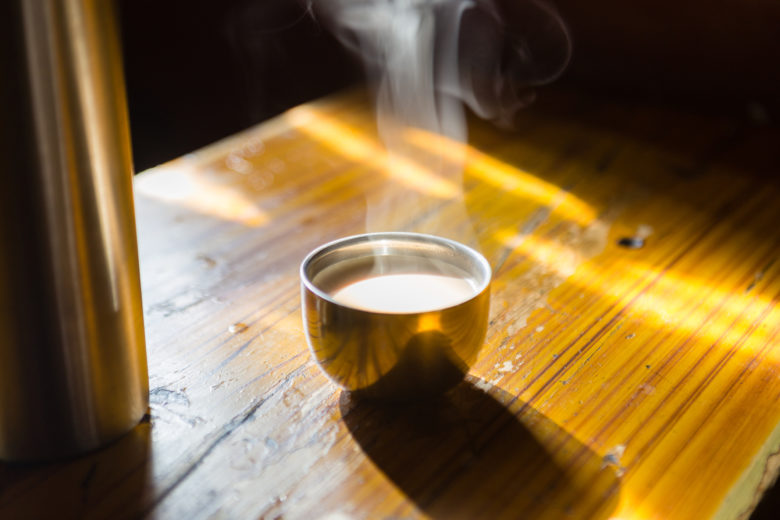
Black coffee blended with 1 to 2 tablespoons each of unsalted grass-fed butter and medium chain triglyceride (or MCT) oil, butter coffee — known as “bulletproof coffee” in some circles — is purported to shrink waistlines and boost brain function. Fueled by the fact that grass-fed butter provides a healthful fat mix and the theory that butter slows the uptake of caffeine to deliver prolonged energy throughout the day, this morning elixir is lauded as a superior swap for regular coffee.
Saying the butter coffee trend dropped out of thin air would be right for all the wrong reasons. Living high in the mountains, Himalayan populations from the Sherpas in Nepal to Kashmirs in northern India have been sipping similar brews for centuries. In addition, the Gurage people of Ethiopia traditionally prepare coffee with butter, honey and salt. In Vietnam, chon coffee beans are sautéed with butter, salt and sugar, then lightly roasted. And in Singapore, it’s common to sauté coffee beans with butter and spices before grinding.
One of the most studied blends is traditional Tibetan butter tea, called po cha. The drink is made by churning fermented black tea with salty yak butter. With Ayurvedic origins, each butter tea ingredient serves a purpose. The tea may improve mental alertness and cognitive capacity, and the polyphenol compounds may help buffer the stress of high-altitude living. Sodium balances the diuretic effects of the tea, while yak butter contains about 2.5 percent conjugated linoleic acid. CLA has been shown to have anti-carcinogenic properties and may help reduce hunger, decrease body fat mass and increase lean body mass in some people. In the unique and harsh environment of the Tibetan Plateau, butter tea is sipped throughout the day for energy, hydration and fuel for farming and pilgrimage.
But before the rest of the world starts adding pads of butter to its morning java, it’s important to remember context. Not only is butter produced from a wild yak grazing the Himalayas compositionally different than that of a dairy cow on the other side of the globe, but butter coffee drinkers who aren’t trekking the low-oxygen conditions of the Himalayas may simply be adding excess calories to their diets.








